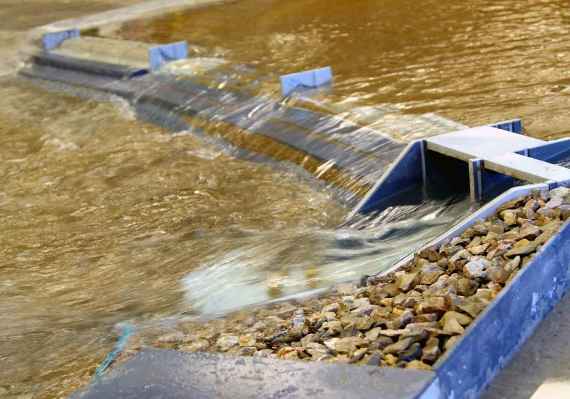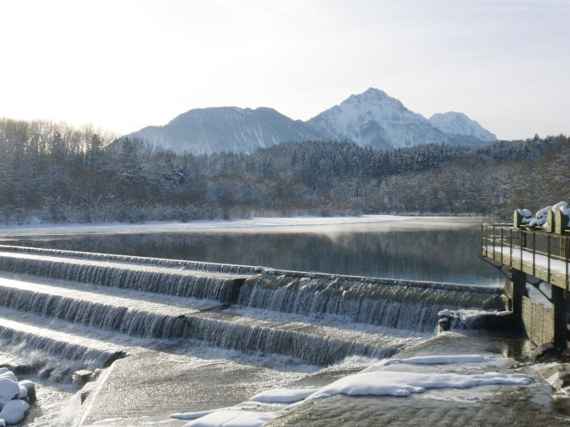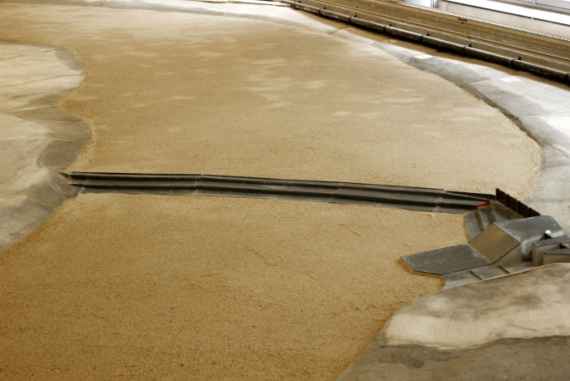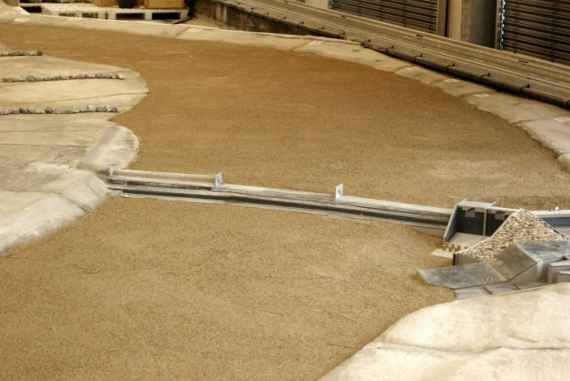On the river Saalach, the Hammerauer Werkswehr was rebuilt. The aim of the reconstruction was to improve the energy production of the power plant Annahütte and flood protection in the surrounding area, taking into account aspects of water ecology and sediment budget.
The Annahütte steel mill intends to increase energy production from hydroelectric power on the river Saalach by increasing the discharge and building new power plants. For this purpose, a new weir system with a higher reservoir level is planned.
The Institute for Hydraulic Engineering and Calibration of Hydrometrical Current-Meters has been involved in the development of a river morphologically sustainable solution for the reconstruction of the Hammerau weir. Essential tasks were the participation in the design of an optimised solution proposal as well as the realisation of physical model tests with movable bed. The main objective of the model tests was to improve the bed load transport via the weir into the tail water and thus to reach an improved flood safety compared to today and at the same time to enable an increased energy production.
The stepped weir on the Saalach before reconstruction
For the new building of the weir, a construction of tube weirs and gravel sluices was planned to replace the old stepped weir. In the event of flooding, the tube weirs will be opened and the gravel locks opened, thus facilitating bed load transport and flood discharge via the weir.
The morphological model before start of the model tests: the existing stepped weir before reconstruction
The morphological model before the start of the model tests: the newly planned weir
The 1 to 60 scale hydraulic engineering model represented 1.6 km of the river section. Both model tests with the existing weir and model tests with the planned weir were carried out. The models were loaded with a high bed load input upstream of the weir and with floods up to the 1000 year flood. The flood levels and the bed levels after the floods were recorded and compared.
By comparing the findings of the existing weir with those of the planned weir, it could be proven that the new design of the weir improves bed load transport in case of flooding and flood safety upstream of the weir.
Furthermore, in the course of the model tests, the scour protection of the structure was developed and currents and water levels caused by the new structure were investigated. Further results of the model tests are findings on the risk of log jams and suggestions for the operation of the new weir.
CUSTOMER: Steelworks Annahütte Max Aicher GmbH & Co. KG.




